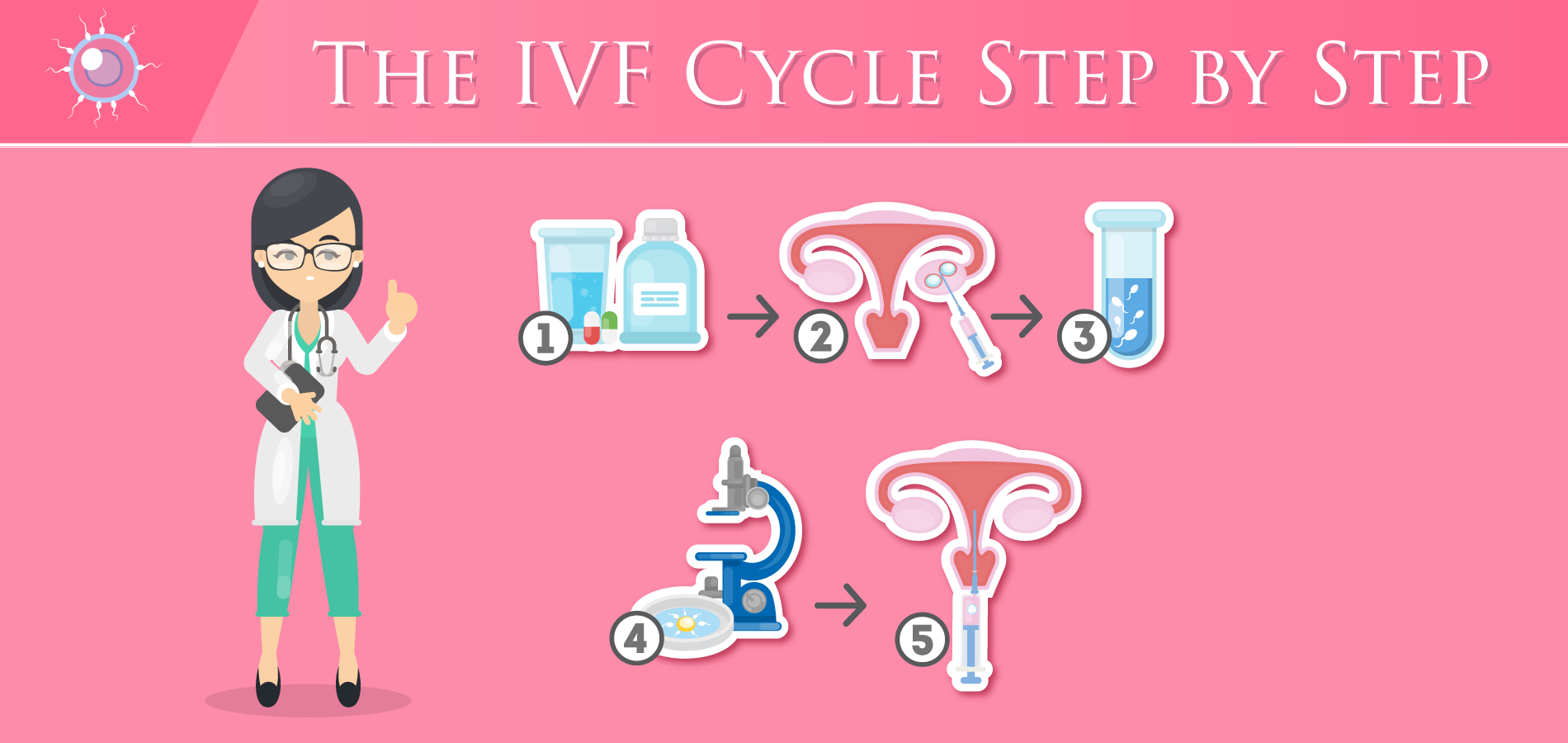The in vitro fertilization (IVF) cycle is made up of multiple procedures that are strategically timed. According to the Mayo Clinic, one cycle of IVF can take about two weeks, and more than one cycle may be required. This article breaks down the multiple steps of the IVF Cycle for an easy to understand step by step introductory guide.
In vitro fertilization (IVF) is an assisted reproductive technology (ART) that people seek out as a treatment for infertility. It is important to consult with a physician that you trust who can discuss your specific case and explore if IVF is the right option for you. In the IVF cycle, there are five primary procedures. Depending on your treatment plan, each procedure may require additional assistance. This step by step article explains the IVF Cycle and what you can expect.
Step One: Ovulation induction
In the initial procedure, the ovaries are stimulated by medication to produce eggs. The medication and dosage required for this part of the process is subjective and specific to each patient’s treatment plan. During this part of the IVF cycle, medications may also be used for:
-
oocyte maturation (helping the eggs mature)
-
preventing premature ovulation (releasing and developing the eggs too soon)
-
preparing the lining of the uterus (making the uterus lining more receptive to implantation of the embryo)
*Progression to egg retrieval in the IVF process may be cancelled for one of the following reasons:
-
If there are not enough developing follicles (follicles are the small sacs in the ovaries that house an immature egg until becomes mature and is released through ovulation).
-
If ovulation occurs prematurely (when the developing egg is released too soon).
-
If there are too many developing follicles, this can result in ovarian hyperstimulation syndrome (OHS)
-
Other medical issues
Step Two: Egg retrieval
Once the eggs have reached maturity and before ovulation, the eggs are retrieved. Multiple eggs can be retrieved in a session. The mature eggs are then incubated, and if identified as healthy and mature, they will be mixed with sperm to attempt fertilization.
Step Three: Sperm retrieval
During this part of the IVF cycle, a sperm sample must be provided. This can be done through masturbation, or alternatively through testicular aspiration (a surgical procedure where a needle is used to extract sperm from the testicle). Once sperm is collected, it is separated from the semen fluid in preparation for the next phase in the IVF cycle.
Step Four: Fertilization
This is the process where the sperm and egg are introduced, and if successful will produce an embryo. There are two primary methods used to attempt fertilization.
- Insemination: this is where healthy sperm and eggs are introduced and incubated together.
- Intracytoplasmic sperm injection (ICSI): in this procedure, a healthy sperm is injected directly into the egg. This procedure is used to assist the fertilization process when semen quality or quantity is low.
Step Five: Embryo transfer
If fertilization is successful, there will be one or more embryo’s available for transfer into the uterus. The embryo or embryos will be transferred into the uterus using a syringe through a catheter. Impregnation will occur if the embryo successfully implants into the lining of the uterus.
Take a deeper look into IVF in Canada by downloading the free eBook below. This comprehensive outline will guide you through helpful resources to navigate the costs, risks and much more.
Download your Free E-Book — IVF in Canada: The Complete Beginner's Guide

Related Reading:
Free eBook: IVF in Canada
5 Things You Need To Know About IVF Cost in Canada
My Top 5 ‘Ah ha’ Moments for Group Health Spending Accounts






